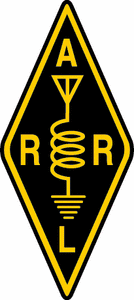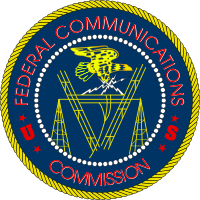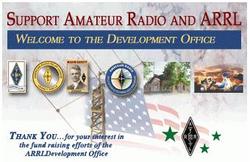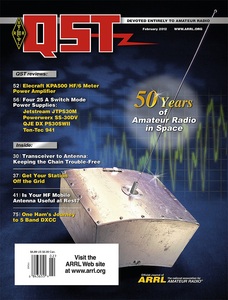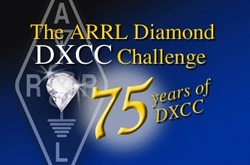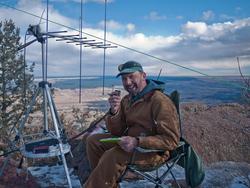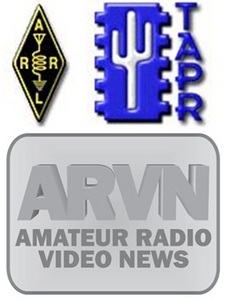 January 12, 2012 John E. Ross, KD8IDJ, Editor
| ||||||||||
+ Available on ARRL Audio News. + ARRL Board of Directors Gather this Weekend for 2012 Annual Meeting
ARRL policy is made by its Board of Directors. The 15 voting members of the Board are the Directors who are elected by the ARRL members in their respective divisions. The Board meets in January and July, usually in the Hartford area. ARRL members also elect Vice Directors who may attend the meetings. ARRL Directors and Vice Directors are volunteers who work hard to represent the ARRL in their divisions, to represent the members who elect them on policy issues and to conduct the committee work that is so important to good decision-making. The 2012 Annual Meeting begins on Friday, January 13 and is expected to run through Saturday afternoon. Usually, the Annual Meeting is held the third full weekend in January, but with the World Radiocommunication Conference (WRC-12) beginning January 23, the Board voted to hold its meeting early. The two Standing Committees -- the Administration & Finance (A&F) Committee and the Programs & Services Committee -- will meet on Thursday, January 12. These two committees are made up of five Directors and a Vice Director, with the treasurer serving as an additional member of the A&F Committee. Read more here. + FCC News: FCC Denies ARRL Petition on Vanity, Club Call Signs On January 11, the FCC denied an ARRL Petition for Reconsideration concerning vanity and club call signs. Filed with the Commission in January 2011, the ARRL's Petition was in response to the FCC's Report and Order that detailed rules changes to the vanity call sign system and call signs for Amateur Radio clubs. These new rules went into effect on February 14, 2011.
The FCC noted that the ARRL supports its efforts to prevent club stations from obtaining an unfair share of desirable call signs, but expresses concern that the specific rule language adopted by the Commission "does not preclude the abuses that the Report and Order intended to preclude." In its Petition, the ARRL stated that if a club has multiple station trustees, each of these trustees could obtain a vanity call sign for the club, thereby allowing the club to obtain multiple vanity call signs. The ARRL also argued that a club could "'gam[e]' the club station vanity call sign system" by obtaining multiple FCC Registration Numbers (FRNs) and applying for a vanity call sign under each FRN. "We do not believe that the vanity call sign system is subject to the abuses identified by the ARRL," the FCC said, "or that it's suggested rule changes are necessary." Read more here. + ARRL Meets 2011 Fundraising Goals
Thanks to the generosity of dedicated members and friends, the ARRL successfully met its 2011 fundraising goals. More than 6000 individuals and clubs supported the efforts of the ARRL this past year through gifts to the Diamond Club, the Spectrum Defense Fund, the Education & Technology Fund, the Historic Preservation Fund, the W1AW Endowment Fund and the ARRL Endowment Fund. Many of the ARRL's programs and services would not be possible without the additional support of its members. The Development Office -- managed by Chief Development Officer Mary Hobart, K1MMH -- worked tirelessly throughout 2011 to make the membership aware of these needs. "I am proud to report that our members have enthusiastically and generously responded to our appeals all year long," Hobart said. "Our overall goal for 2011 was $960,000. As of the end of the year, we had met -- and exceeded -- all expectations. To everyone who made this possible, thank you!" Read more here. + Get Ready for the February Issue of QST The February issue of QST is jam-packed with all sorts of things that today's Amateur Radio operator needs. This issue celebrates 50 years of the Amateur Satellite Service, marking the December 1961 launch of OSCAR 1, the first Amateur Radio satellite. Discover articles, projects and tips to improve your station, as well as information about operating activities that will keep you active on the air throughout 2012.
With energy costs skyrocketing, many people are looking to find ways to save on their electric bill. It's no secret that radios, amplifiers and all the peripherals in your shack can drive up the cost of your monthly usage. With this in mind, Mert Nellis, W0UFO, presents "Characterizing Solar Panels for Amateur Radio Applications." Solar panels use the Sun to produce electrical current to charge a battery, providing steady power for radios and small appliances. And moving your station off the grid may be easier than you think. In his article "Going Totally Green," Dave Gauger, W9CJS, explains that it is simple to make your station environmentally friendly. Gauger notes that he didn't set out to "go green" to save money on his electric bill, but did it for the fun and challenge, as well as to have the ability to provide substantial HF communications in the event of a major power outage.
This year marks the 75th anniversary of the ARRL's DXCC Award, the world's preeminent DXing award. To celebrate this milestone, the ARRL is presenting the Diamond DXCC Challenge. We are challenging DXers worldwide to work at least 100 of the 231 entities representing those on the original 1937 DXCC List. And when you're out there hunting that DX, why not swing your beam south for Antarctic Activity Week? Ruth Vano, KB0USC, tells the story of this annual event sponsored by the Worldwide Antarctic Program in her article "To the End of the Earth -- Antarctic Activity Week." ARRL Contributing Editor Phil Salas, AD5X, takes a look at the Elecraft KPA500 HF/6 meter power amplifier in this month's Product Review. He says this "fully featured amplifier looks and works great on your desk or at your DX location. It's 160 to 6 meter 500 W capability, auto band switching and PIN diode switching integrate well with all transceivers." QST Product Review Editor Mark Wilson, K1RO, test drove four 25 A switch mode power supplies: the Jetstream JTPS30M, the Powerwerx SS-30DV, the QJE DX PS30SWII and the Ten-Tec model 941. Of course, there are the usual columns you know and expect in the February QST: Happenings, Hints & Kinks, The Doctor Is In, How's DX, Vintage Radio and more. Look for your February issue in your mailbox. QST is the official journal of ARRL, the national association for Amateur Radio. QST is just one of the many benefits of ARRL membership. To join or renew your ARRL membership, please see the ARRL Web page. On the Air: The ARRL January VHF Sweepstakes Means Winter Contesting Fun for Everyone
VHF operators will be on the bands in force the weekend of January 21-23, as the ARRL January VHF Sweepstakes hits the airwaves. This contest gives the VHFer in all of us a chance to do some contesting during the winter months. "Don't let the cold weather in much of the US dissuade you from getting on the air," said ARRL Contest Branch Manager Sean Kutzko, KX9X. "Many a portable or Rover operation has done just fine in January. While propagation enhancement can seem fleeting in January, there have been some monstrous openings during this contest in years past. Who knows? Perhaps the propagation gods will grant us a late holiday gift with an extended aurora or tropospheric event!" Read more here. + FCC News: FCC Grants Special Temporary Authority for Amateur Spread Spectrum Experiments Phil Williams, KA1GMN, has been granted a Special Temporary Authority (STA) by the Federal Communications Commission to conduct Spread Spectrum experiments within 2.5 kHz signal bandwidths on 160 through 2 meters, at a maximum of 100 W effective radiated power. The six month authorization takes effect February 1 and expires on July 31. The FCC has assigned Williams the call sign WF9XJD for use during his experimental transmissions. Read more here. + FCC News: Radio Amateurs Not Affected by Narrowbanding Requirements
The FCC released a Public Notice on January 6, reminding land mobile licensees, frequency coordinators and equipment manufacturers that they have less than one year to transition to narrowband operations in the 150-174 and 421-512 MHz bands. While the latter frequency range includes amateur service allocations, radio amateurs are not affected by the narrowbanding requirement. Land mobile operation is permitted in parts of the 421-430 MHz band in the areas around Detroit, Cleveland and Buffalo, and land mobile licensees in these areas are among those who will have to migrate to narrowband (12.5 kHz or narrower) technology by January 1, 2013. Amateur operation is not permitted along the Canadian border (north of Line A as defined in the FCC Rules) in the band 420-430 MHz. + On the Air: ARRL Requests Feedback for 60 Meter Band Plan In November 2011, the FCC released a Report & Order detailing new rules for the 5 MHz (60 meters) Amateur Radio band. As of January 12, these rules have not yet been published in the Federal Register. In order to be official, the rules must be published in the Federal Register and will take effect 30 days after the publication date. The R&O brings with it a number of changes for 60 meter operators. Considering the expected increase in 60 meter activity when the R&O finally takes effect, the ARRL is asking for feedback to assist in crafting a proposed band plan. Read more here. Solar Update
Tad "Searching for a way to January Sun" Cook, K7RA, reports: The average daily sunspot numbers were up this week by a tiny bit, from 88.1 to 90.6, while the average daily solar flux was down slightly, from 136.2 to 134.9. The latest daily projection from NOAA/USAF shows the solar flux about 15 points lower than the average for the week, at 120 on January 12-15, 125 on January 16-19, and then a jump of 20 points to 145 on January 20-26. It should decline again, and then rise to a peak of 165 on February 17-21. The predicted planetary A index is 5 on January 12, 8 on January 13-14, 5 on January 15-17, 8 on January 18-19, and then back to 5 on January 20-27. Look for more information on the ARRL website on Friday, January 13. For more information concerning radio propagation, visit the ARRL Technical Information Service Propagation page. This week's "Tad Cookism" is brought to you by Vanden Plas' January Sun. Technology News: Videos of 2011 ARRL/TAPR Digital Communications Conference Now Available Online Amateur Radio Video News (ARVN) has released high-definition videos of all the talks presented at the 2011 ARRL/TAPR Digital Communications Conference (DCC), held September 16-18. The programs are now available online on the ARVN website.
The DCC is a three-day conference on Amateur Radio digital technology. Among the video presentations are 18 seminars, the Saturday Banquet and the welcome introduction by TAPR Chairman Steve Bible, N7HPR. According to ARVN Producer Gary Pearce, KN4AQ, most of the talks are fairly technical, although there are four separate sessions that cover "Intro to" topics. "All of the talks -- except the 'Intro to' talks -- were shot in three-camera high-definition, with wireless mics for 'close-up' audio of the presenter, as well as the question-and-answer period," he explained. "The 'Intro to' talks were shot with a single, standard-definition camera. This year, Pearce decided to release the programs on the web instead of the DVDs that have been produced in previous years (although the DVDs will be available later). "I wanted to make the programs available more quickly and easily to a worldwide audience," he said. "The web has become an easy, high-quality distribution medium." Amateur Radio Fun: New QuickStats Poll Now Available on ARRL Website Four new poll questions have just been published on the QuickStats page on the ARRL website. Let your voice be heard! Questions in this month's QuickStats poll:
Visit the QuickStats page and be sure to bookmark it in your browser. Results from this QuickStats poll will be published in the April 2012 issue of QST on the QuickStats page, located in the rear advertising section of the magazine. Along with monthly poll results, QST QuickStats offers colorful charts and graphs that highlight interesting Amateur Radio statistics. This Week in Radiosport This week:
Next week:
All dates, unless otherwise stated, are UTC. See the ARRL Contest Branch page, the ARRL Contest Update and the WA7BNM Contest Calendar for more information. Looking for a Special Event station? Be sure to check out the ARRL Special Event Stations Web page. Upcoming ARRL Section, State and Division Conventions and Events
To find a convention or hamfest near you, click here. ARRL -- Your One-Stop Resource for Amateur Radio News and Information Join or Renew Today! ARRL membership includes QST, Amateur Radio's most popular and informative journal, delivered to your mailbox each month. Subscribe to NCJ -- the National Contest Journal. Published bi-monthly, features articles by top contesters, letters, hints, statistics, scores, NA Sprint and QSO Parties. Subscribe to QEX -- A Forum for Communications Experimenters. Published bi-monthly, features technical articles, construction projects, columns and other items of interest to radio amateurs and communications professionals. Free of charge to ARRL members: Subscribe to the ARES E-Letter (monthly public service and emergency communications news), the ARRL Contest Update (bi-weekly contest newsletter), Division and Section news alerts -- and much more! Find us on Facebook. Follow us on Twitter. ARRL offers a wide array of products to enhance your enjoyment of Amateur Radio Donate to the fund of your choice -- support programs not funded by member dues! Click here to advertise in this newsletter. | ||||||||||
